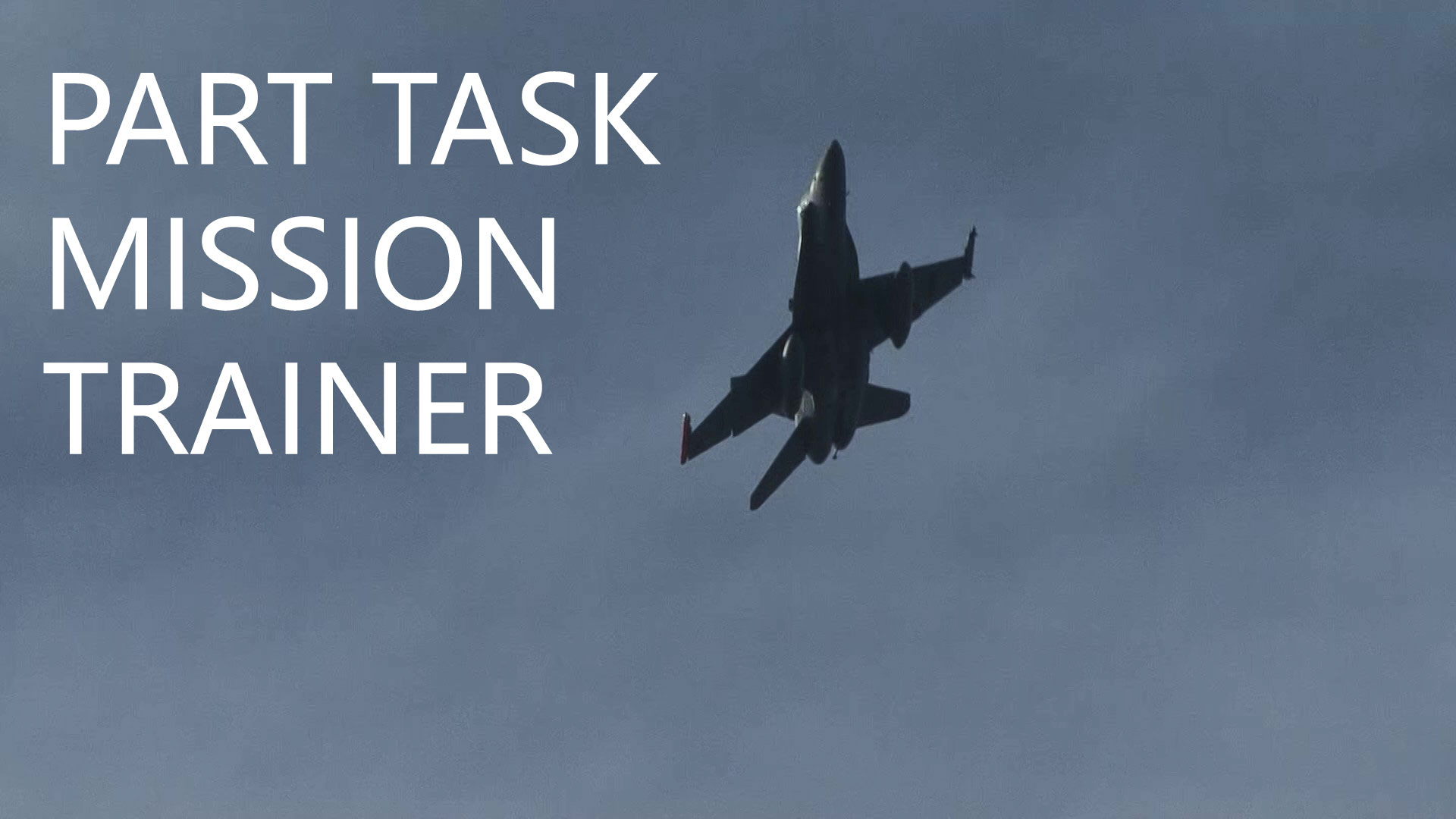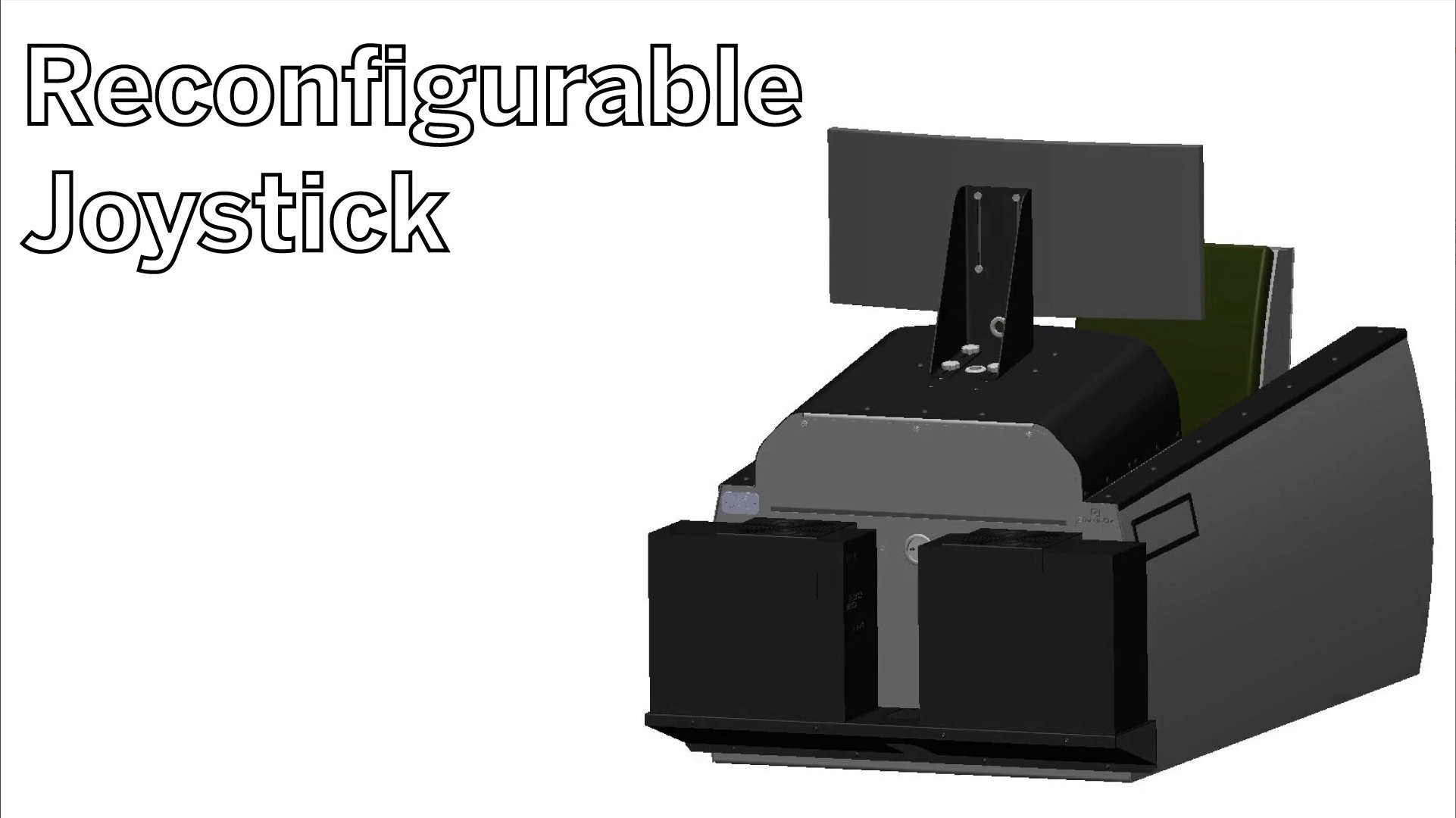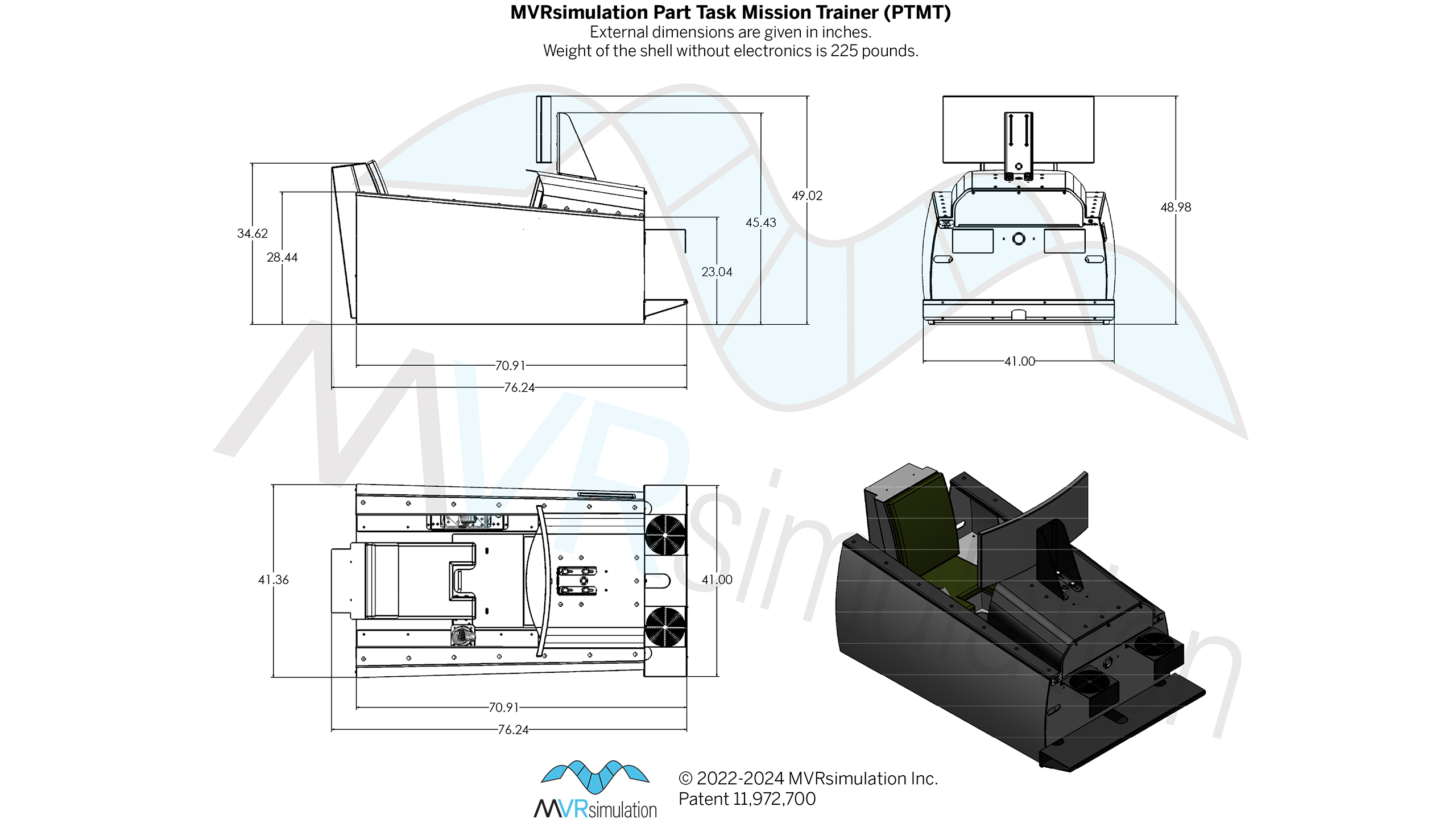Fixed-Wing Part Task Mission Trainer
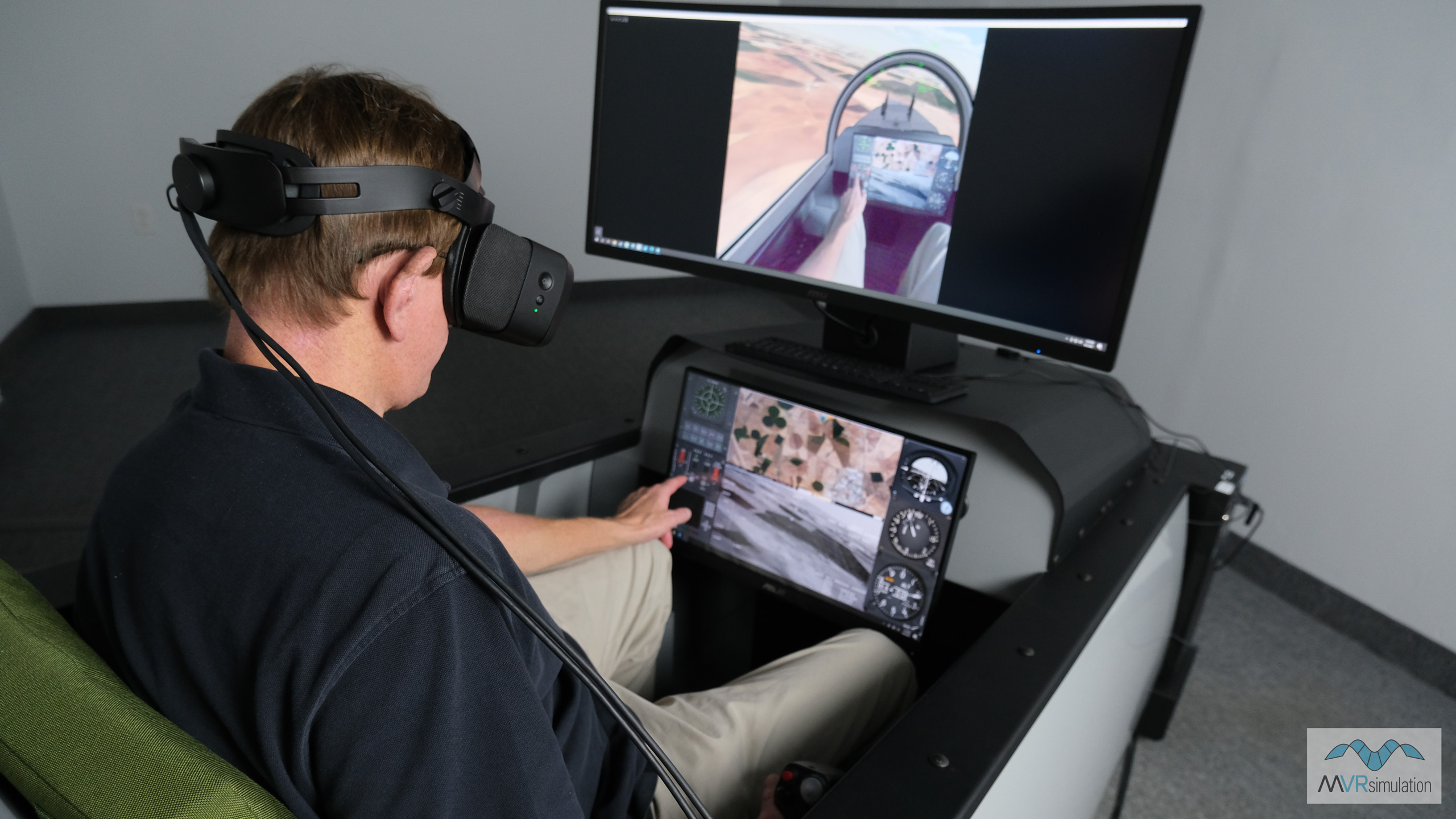

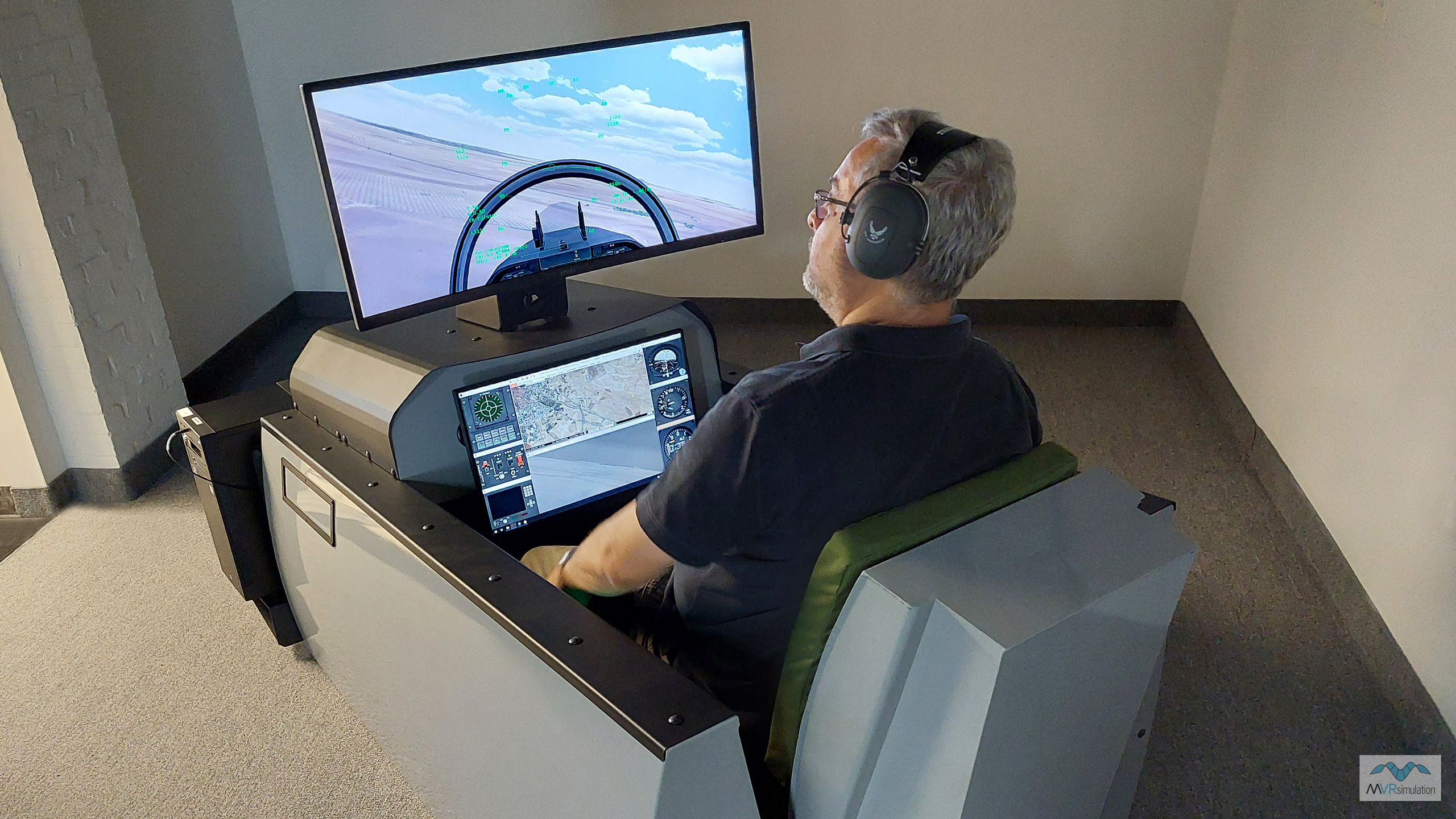


MVRsimulation's fixed-wing Part Task Mission Trainer (PTMT) was designed and built under an internal development program. The PTMT provides a low-cost, quick-deploy cockpit training solution to fill the gap in current in-use mission tactics training toolkits for military fixed-wing pilots. The system aims to maximize suspension of disbelief for trainee pilots as they practice mission tactics and coordination as part of joint training operations in networked environments. It can also operate as a standalone training solution.
Pilots are immersed in the cockpit subsection with notional aircraft hardware and custom configurable flight control touchscreens for conducting air-to-air or air-to-ground training scenarios. The PTMT can be configured for training for current 3rd- and 4th-generation combat aircraft currently used by NATO nations by easily changing the position of the specially-designed, patented*, flight control stick between side-stick and center-stick positions.
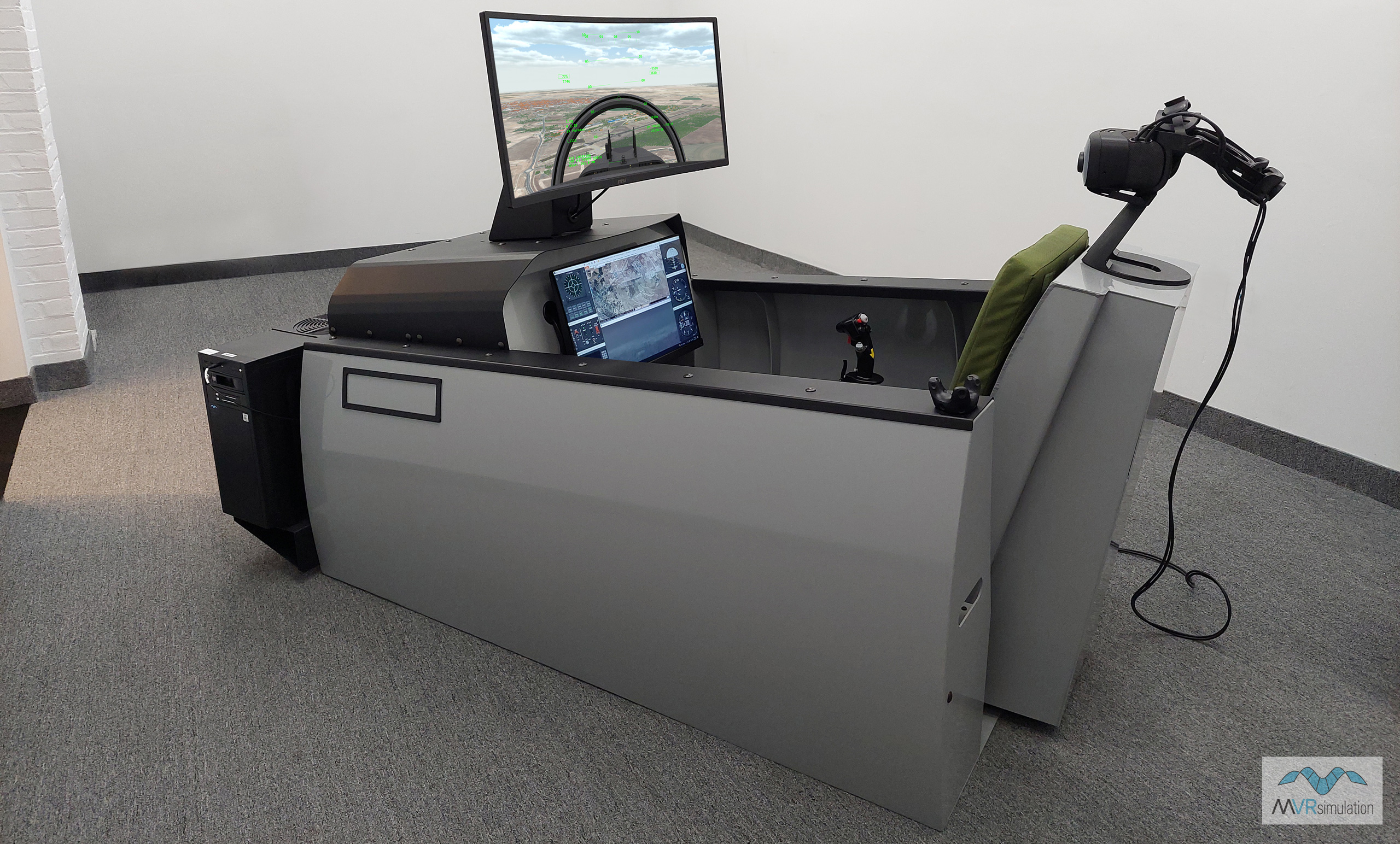
The PTMT with the Varjo XR-3 mixed reality headset. VRSG renders the out-the-window view in the headset and on the curved display, and simulated sensor view rendered on the cockpit control panel.
With this cost-effective, easy-to-assemble/break down modular plug-and-play system, pilots can practice to improve skillsets such as gun runs and strafes, building muscle memory without requiring use of an actual airframe. A pilot in the PTMT can manage complex air-to-air scenarios -- taking virtual control of any constructive player at any time, triggering scripted behaviors, and employing aircraft systems that directly mimic the capabilities of their real world counterparts, all while interacting with controls in the same manner as they would in an actual aircraft. The simulator is currently in service in the NATO Tactical Leadership Programme (TLP) at Los Llanos Air Base, Albacete, Spain.
Scenarios are run on Battlespace Simulations’ (BSI’s) Modern Air Combat Environment (MACE). MVRsimulation’s Virtual Reality Scene Generator (VRSG) software provides the real-time 3D out-the-window view, sensor views, 3D terrain, and models. BSI’s full suite of tools enables multi-mission virtual role playing in the air-to-air arena, to include tactical displays that are integrated with HOTAS controls and emulate real world tactical systems. This coupling of MACE with VRSG provides the degree of immersion ideally suited to training from solo part-task mission objectives to large-scale, distributed live-virtual-constructive (LVC) rehearsal of major combat operations.
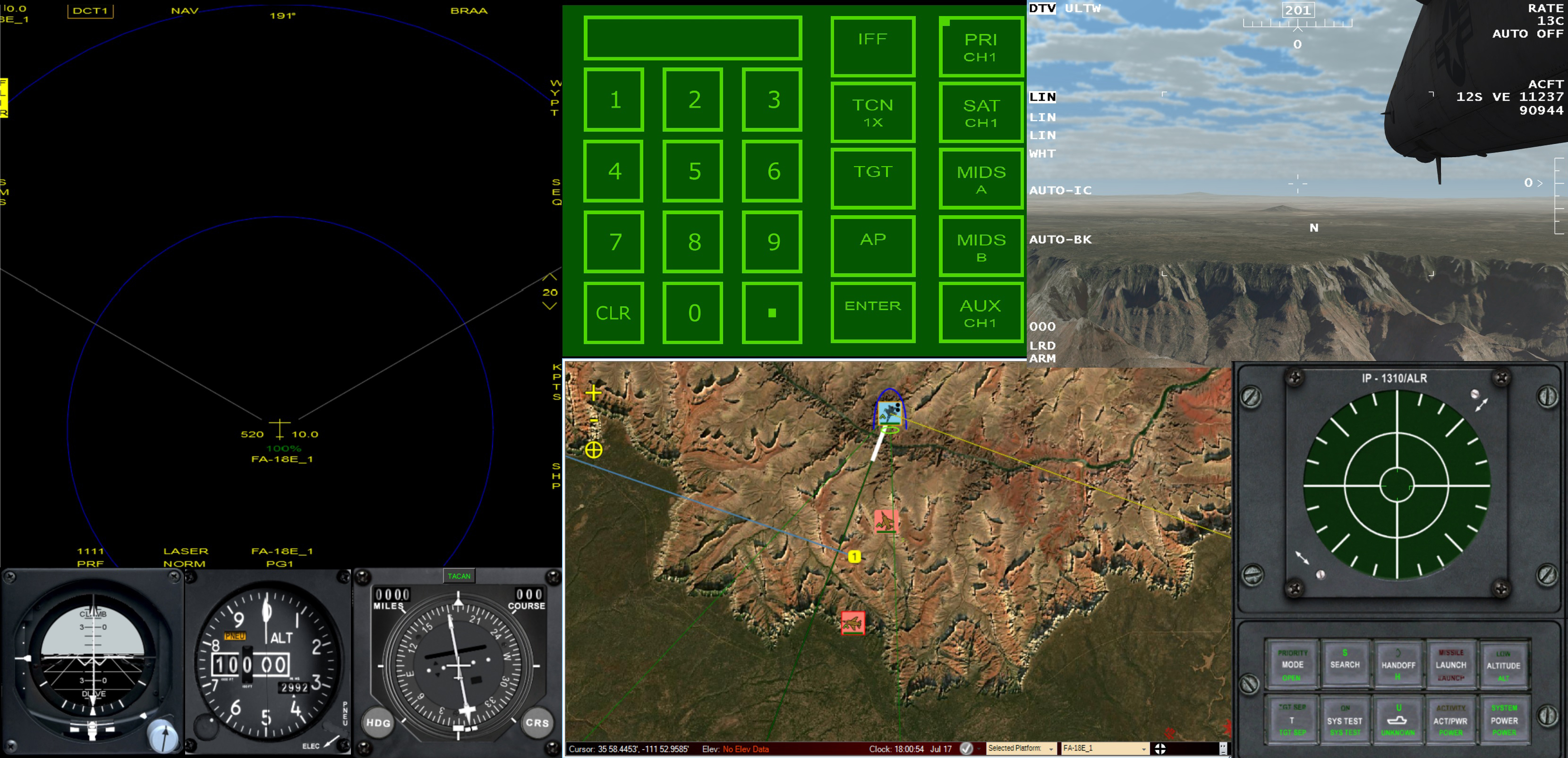
Close-up of the PTMT cockpit control panel, which is not aircraft specific. The flexibility of BSI MACE's multifunction display (MFD, upper left) enables the setup of various panels and training scenarios. The controls shown here include MACE's up front controller (UFCD, top center), VRSG's simulated sensor feed (top right) with an AN/DAS-1 overlay (slewed via one of the HOTAS throttle controls) along with MACE's artificial horizon, altimeter and HSI (bottom left), moving map (bottom center) and radar warning receiver (bottom right). The UFCD interfaces with the MFD to enable input of mission essential data and control of DIS radios.
To take advantage of the eye-tracking technology in Varjo headsets, MVRsimulation has developed the means to have VRSG visualize the gaze of the pilot. During a training mission, if a pilot in the PTMT is wearing a Varjo headset, VRSG can track the pilot’s head position and orientation, track the gaze vector using the Varjo device’s pupil tracking functionality, and then visualize the gaze of each eye independently as a color-coded 3D cone. VRSG can export this data via DIS as a PDU log, which makes the eye-tracking playback valuable for after-action visualization.
Working closely with a US Air Force customer and their NATO partners, MVRsimulation has built the elements of a fully integrated cockpit shell that approximates the real-life physical experience of being seated in a cockpit, with touch screen displays for pilot interaction and an OTW view that can be used with a mixed-reality head-mounted display, curved display, or partial dome display. To support both 3rd and 4th generation jet aircraft, MVRsimulation developed a unique adjustable mount for a flight control joystick to enable rapid side- or center-stick reconfiguration. MVRsimulation has been awarded a patent No. US 11,972,700 by the United States Patent Office for this technology.
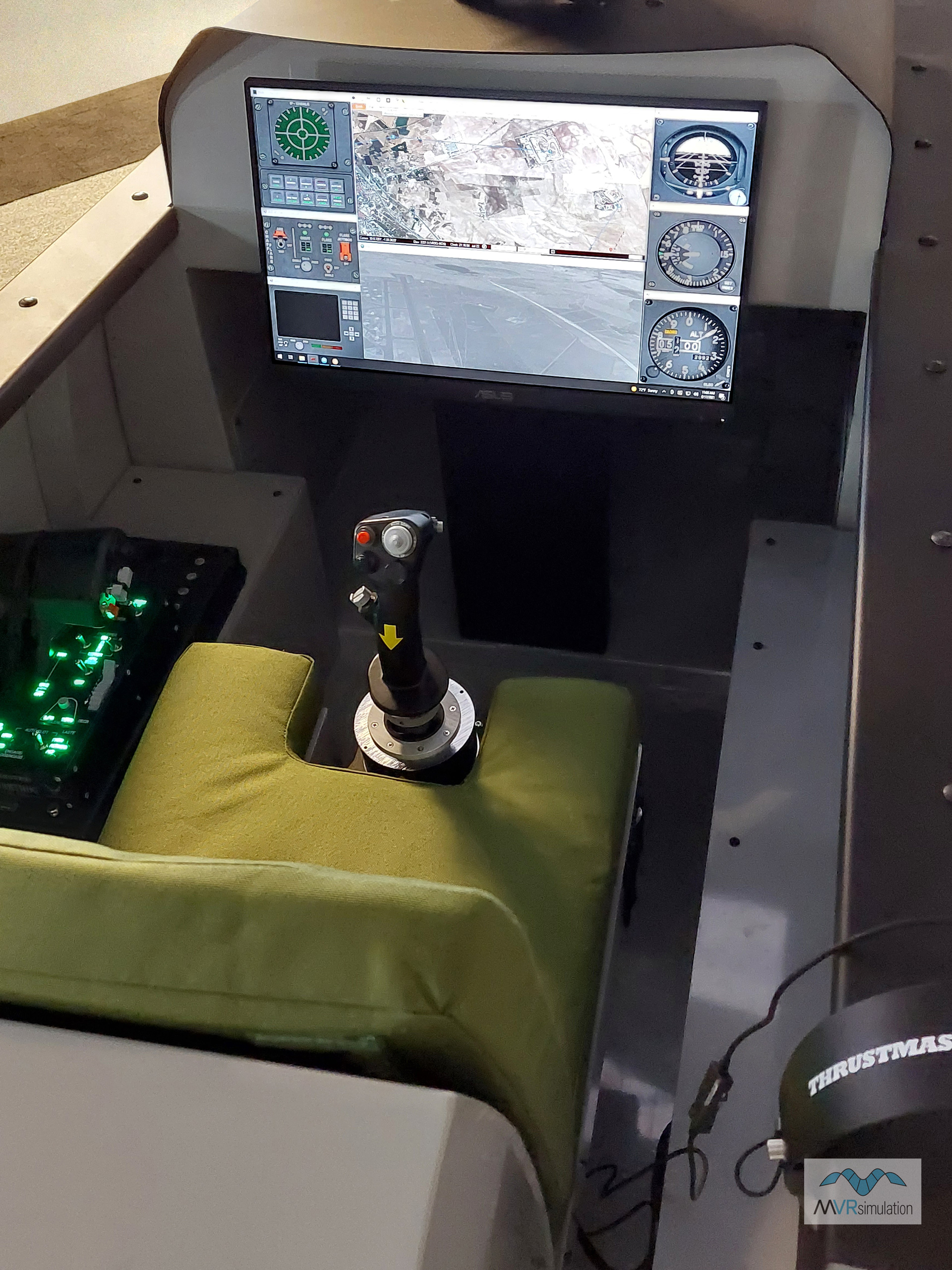
MVRsimulation's adjustable, patented*, flight control stick mount in the center-stick position.
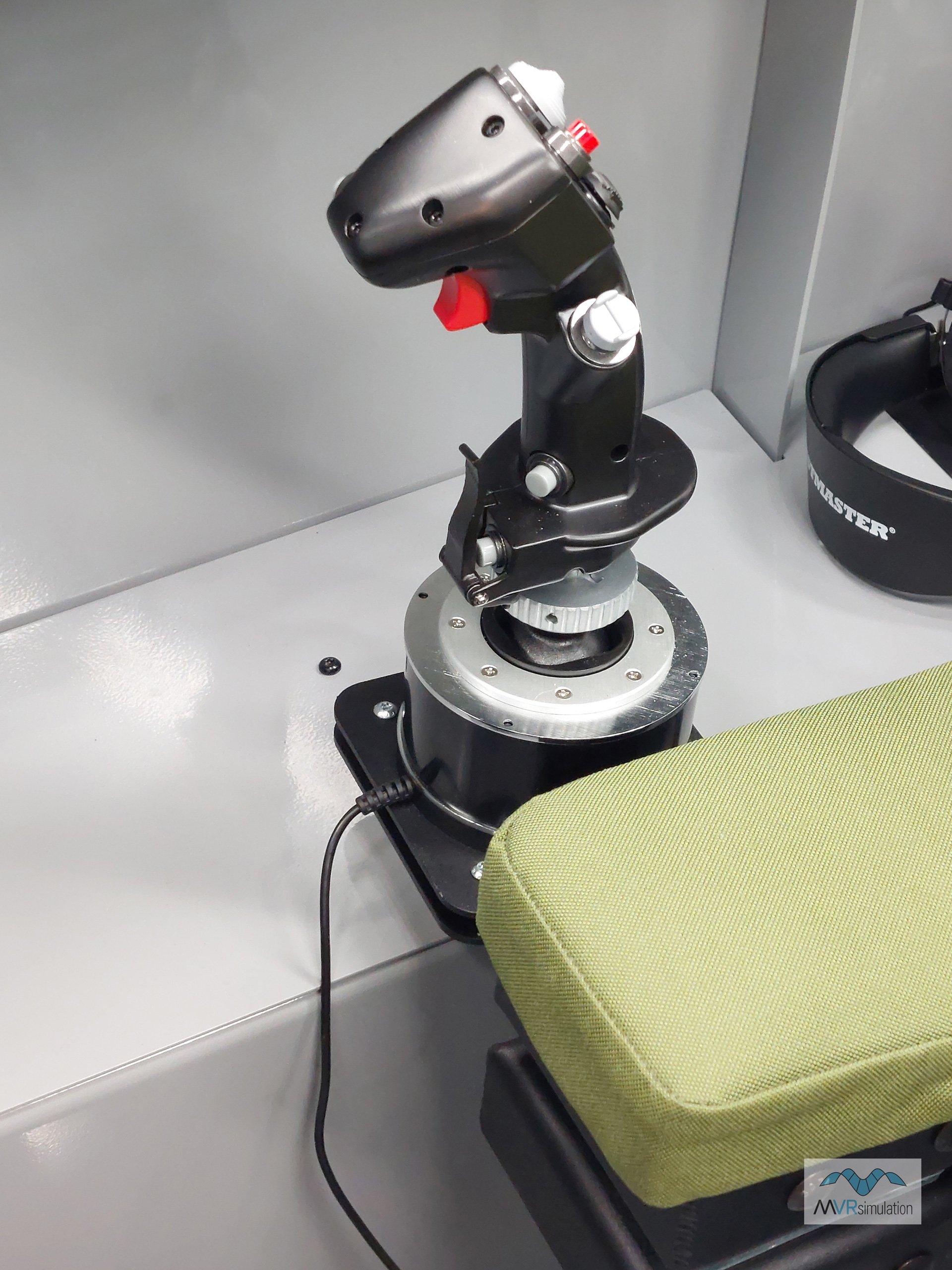
MVRsimulation's adjustable, patented*, flight control stick mount in the side-stick position.
Shell enclosure
The enclosure is a welded aluminum structure made in the USA, representing a subset of the fuselage from the aircraft nose to just behind the cockpit seat. Includes an adjustable mount for the flight control joystick, which can be easily repositioned for center-stick or side-stick controls (without the need for disassembly/reassembly).
Dimensions (external) are 76.24” length x 41.36” width x 45.43” height cockpit shell without an OTW monitor. Overall height is variable, based on the location of the OTW monitor. In determining siting, calculate an additional 2’ safety zone on all sides. Weight of the shell without any electronics is 225 pounds.
PC Hardware and Accessories
- 1 computer running MACE with cockpit controls and VRSG sensor pod
- 1 computer running VRSG OTW view
- 34" curved gaming monitor (3K resolution)
- 22” touch screen monitor
- Varjo Head Mounted Display mixed-reality system (with one-time, long-term buyout software maintenance)
- Patented adjustable mounted flight control joystick for side- or center-stick positioning
- Thrustmaster HOTAS Warthog
- USB push-to-talk Dalcomm Tech, LLC audio headsets
Software
- MVRsimulation VRSG with 3D terrain and model libraries
- BSI MACE EW with cockpit multi-function display (MFD)
- BSI VIPER DIS radio
MVRsimulation Virtual Reality Scene Generator (VRSG) is a Microsoft DirectX-based render engine that provides geospecific simulation as an image generator (IG) with game quality graphics. VRSG enables users to visualize geographically expansive and detailed virtual worlds at 60Hz frame rates on commercially available PCs. VRSG comes with a large collection of geospecific terrain and 3D models.
Battlespace Simulations’ full suite of tools enables multi-mission virtual role playing in the air-to-air arena, to include tactical displays that are integrated with HOTAS controls and emulate real world tactical systems as well as a Helmet Mounted Cueing Systems for use in immersive VR/AR environments. MACE’s real-time physics engine accurately simulates full-spectrum scenario generation and control with the ability to integrate with live players via tactical datalinks and with other simulation or range systems via DIS, TENA, or HLA.
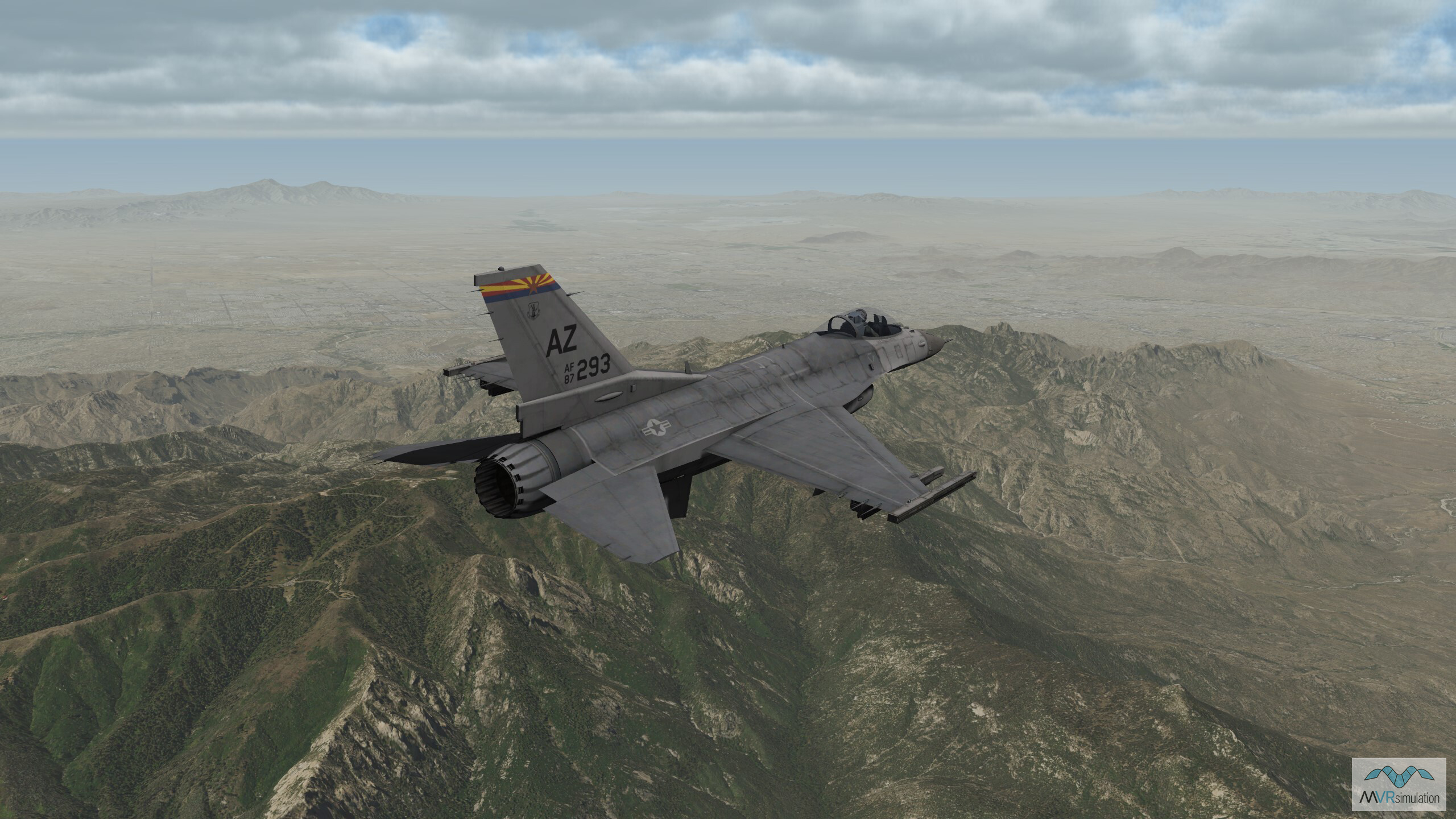
A VRSG F-16 real-time entity in flight over VRSG’s Tucson, AZ, terrain.
Modular, reconfigurable, and transportable
- Can be configured to replicate the cockpit of any current 3rd- or 4th-generation combat aircraft for customized training
- Easy two-person lift into and out of a crate
- Easy to move to alternative locations
- Training scenarios can also be projected onto large screens or in a domed configuration
- Network capable for interacting in multiplayer distributed simulations
- Support for international configuration.
Low-cost Commercial off-the-shelf system
- Cost includes shell, electronics, and all software licenses.
- Cost does not include shipping, setup support, or onsite training.

The PTMT can be networked with other simulators, including the Deployable Joint Fires Trainer. (Notice the pilot's hand on the controls is visible in the VRSG mixed-reality view.)
MVRsimulation is the sole source manufacturer and provider of the MVRsimulation Deployable Joint Fires Trainer (DJFT) hardware training product, and of VRSG, Scenario Editor, and Terrain Tools software. MVRsimulation does not make its software or hardware available through commercial resellers. In certain circumstances, the transfer of a software license can be made, in accordance with our Software License Agreement.
MVRsimulation maintains a "Best Pricing" policy by offering the same price for a software license or hardware to all customers: US Government, commercial, and international.
Click here for a PDF datasheet with the latest PTMT specs and pricing. To order the PTMT, see the price list and request for quote form.
*United States Patent No. US 11,972,700.

